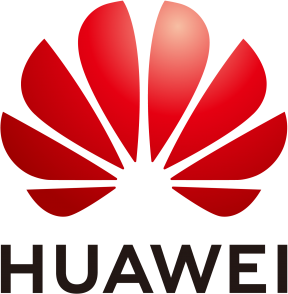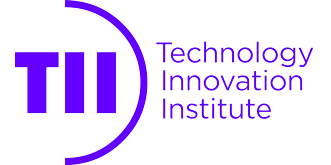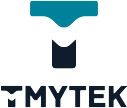Schedule subject to change.
Monday, April 22, 2024
(Monday, 22 April, 11:00 GMT+4)
Room: Grand Ballroom CD, 2nd Floor
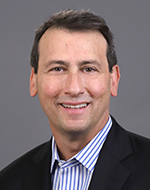 Theodore (Ted) S. Rappaport, New York University, USA
Theodore (Ted) S. Rappaport, New York University, USA
Title: The Expanding World of Wireless Delivery: New Spectrum and Evolving Delivery Approaches
Abstract: With the recent launch of millimeter wave and sub-Terahertz spectrum in much of the world, and given recent World Radio Conference approval of midband spectrum from 6- 17 GHz, wireless networks will soon enjoy more allocated bandwidth than ever before. Yet, the world remains confused about the capabilities, similarities, and differences between these various frequency bands. This talk presents results from the world’s first comprehensive study of the FR1(c) and FR3 3GPP mid-band frequencies poised for use in 5G advanced and 6G networks, and compares the channel results amd radio propagation behavior to sub-6 GHz, millimeter wave, and Terahertz bands. This talk also demonstrates the remarkable success of fixed wireless access at millimeter wave bands (not known by most academics), and shows how satellites are becoming increasingly important for the global cellphone industry.
Bio: Theodore (Ted) S. Rappaport is the David Lee/Ernst Weber Professor in Electrical and Computer Engineering at New York University (NYU), and is a professor in the NYU Courant Computer Science Dept. and the NYU School of Medicine. He founded the NYU WIRELESS research center in 2012 and the wireless research centers at the University of Texas Austin (WNCG) and Virginia Tech (MPRG) earlier in his career. His work has provided fundamental knowledge for wireless system design and radio propagation in wireless channels for the first IEEE 802.11 Wi-Fi standard, the first U.S. digital TDMA and CDMA standards, the first public Wi-Fi hotspots, and proved the viability of millimeter wave, and then Terahertz frequencies for 5G, 6G, and beyond. He founded two businesses that were sold to publicly traded companies – TSR Technologies, Inc. (cellular/paging intercept and E911) and Wireless Valley Communications, Inc. (site-specific wireless network design, deployment and management), and was an advisor to Straight Path Communications which sold 5G millimeter wave spectrum to Verizon. He holds more than 100 patents and is a licensed Professional Engineer, a member of the Wireless Hall of Fame, the US National Academy of Engineering, a Fellow of the US National Academy of Inventors, and a life member of the American Radio Relay League. His amateur radio call sign is N9NB.
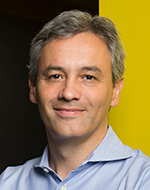 Tommaso Melodia, Northeastern University, USA
Tommaso Melodia, Northeastern University, USA
Title: Open 6G: Toward Open, Programmable, and AI-Driven NextG Systems
Abstract: This talk will present an overview of our work laying the basic architectural and algorithmic principles for new approaches to design open, programmable, AI-driven, and virtualized next-generation cellular networks. We will cover in detail challenges and opportunities associated with the evolution of cellular system into cloud-native softwarized architectures enabling fine grained control of end-to-end functionalities. We will discuss architectural aspects, automation principles, and algorithmic frameworks enabling fine-grained end-to-end control of wireless system from low-level RAN functionalities to orchestration and management. We will also explore a number of enabling technologies including network slicing, spectrum sharing, security, and energy efficiency, and discuss the way forward.
Bio: Tommaso Melodia is the William Lincoln Smith Professor with the Department of Electrical and Computer Engineering at Northeastern University in Boston. He is also the Founding Director of the Institute for the Wireless Internet of Things and the Director of Research for the PAWR Project Office. He received his Laurea (integrated BS and MS) from the University of Rome - La Sapienza and his Ph.D. in Electrical and Computer Engineering from the Georgia Institute of Technology in 2007. He is an IEEE Fellow, an ACM Distinguished Member, and a recipient of the National Science Foundation CAREER award. He received several best paper awards, including at IEEE Infocom 2022. Prof. Melodia is the Editor in Chief for Computer Networks and a co-founder of the 6G Symposium, and served as the Technical Program Committee Chair for IEEE Infocom, and General Chair for ACM MobiHoc, among others. Prof. Melodia’s research on modeling, optimization, and experimental evaluation of wireless networked systems has been funded by many US government and industry entities.
Tuesday, April 23, 2024
(Tuesday, 23 April, 11:00 GMT+4)
Room: Grand Ballroom CD, 2nd Floor
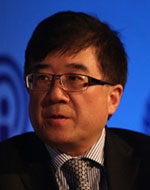 DR. WEN TONG, CTO, Huawei Wireless, Canada
DR. WEN TONG, CTO, Huawei Wireless, Canada
Title: A-RAN, A-Core and A-UE: The Preliminary View on 6G Network
Abstract: The recent breakthrough of the LLM-based-AI will have impact of the direction of the next generation wireless technologies, especially, the 6G. The fast moving of the innovation on AI has created the ChatGPT and Sora types of the generative AI services, furthermore, the with the emerging of embodiment-AI, we can envision the rise of AI work-force in the coming decade. The 6G networks must be designed to enable such an AI revolution. In this talk, we present our views on the new infrastructure to deliver the end-to-end AI services, we highlight the three parts networks building blocks, namely, A-RAN, A-Core and A-UE. We discuss their new functionalities, design principles and the key enabling technologies as well. We provide the architectural blue-print for the 6G networks.
Wen Tong is the CTO, of Huawei Wireless. He is the head of Huawei wireless research. In 2011, Dr. Tong was appointed the Head of Communications Technologies Labs of Huawei, currently, he is the Huawei 5G chief scientist and led Huawei’s 10-year-long 5G wireless technologies research and development. Prior to joining Huawei in 2009, Dr. Tong was the Nortel Fellow and Head of the Network Technology Labs at Nortel. He joined the Wireless Technology Labs at Bell Northern Research in 1995 in Canada. Dr. Tong is the industry-recognized leader in the invention of advanced wireless technologies, Dr. Tong was elected as a Huawei Fellow and an IEEE Fellow. He was the recipient of the IEEE Communications Society Industry Innovation Award in 2014, and IEEE Communications Society Distinguished Industry Leader Award for “pioneering technical contributions and leadership in the mobile communications industry and innovation in 5G mobile communications technology” in 2018. He is also the recipient of the R.A. Fessenden Medal. For the past three decades, he had pioneered fundamental technologies from 1G to 5G wireless and Wi-Fi with more than 500 awarded US patents. Dr. Tong is also a Fellow of the Canadian Academy of Engineering, and he serves as Board of Director of Wi-Fi Alliance.
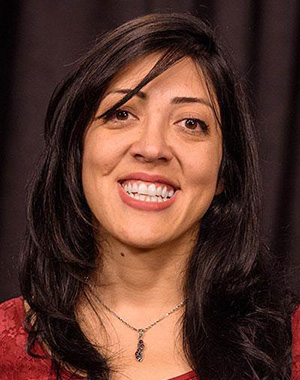 Tara Javidi, University of California San Diego, USA
Tara Javidi, University of California San Diego, USA
Title: Active Learning and Adaptive Sampling for Wireless Network Optimization
Abstract: This talk reports on how ideas from active machine learning, adaptive sampling, and feedback information theory can be used to optimize the design and operation of wireless networks. Active learning broadly considers the problem of learning when data acquisition and labeling is costly and/or complex. This problem is receiving a lot of attention with the pervasive use of AI in engineering design and scientific discovery. In the first part of the talk, we introduce the general problem of active learning and also draw important connection between active learning and information theory. We also identify some critical use cases in scientific experiment and engineering design at large where conventional machine learning approaches fail due to scarcity of clean/reliable data.
The second part of the talk focuses on two concrete examples where we have successfully applied active learning and adaptive sampling to enhance wireless communication design and algorithms. First we consider antenna arrays and beam-forming techniques as essential components of (sub-)millimeter-wave systems where large arrays and array processing techniques are needed to combat significant path loss. We have successfully applied active learning methods/algorithms to performing optimal beamforming in face of stochastic mobility, unknown channel conditions, and other stochastic channel impairments. In our second example scenario, active information acquisition and adaptive discretization is used for empirical/blackbox optimization of networks as well as anomaly detection with significantly less data.
Bio: Tara Javidi (Fellow, IEEE) received her BS in electrical engineering at Sharif University of Technology, Tehran, Iran. She received her MS degrees in electrical engineering (systems) and in applied mathematics (stochastic analysis) from the University of Michigan, Ann Arbor as well as her Ph.D. in electrical engineering and computer science in 2002. In 2005, she joined the University of California, San Diego, where she is currently a Jacobs Family Scholar and Professor of Electrical and Computer Engineering and a Founding Faculty and Fellow of Halıcıoğlu Data Science Institute. She also is a founding co-director of UCSD Center for Machine-Intelligence, Computing and Security.
Tara Javidi’s research interests are in theory of active learning, information acquisition and statistical inference, information theory with feedback, stochastic control theory, and wireless communications and communication networks. Tara served as a Distinguished Lecturer of the IEEE Information Theory Society (2017/18) as well as Communications Society (2019/20). She is also the Editor-in-Chief of IEEE Jorunal of Selected Areas in Information Theory. She and her Phd students are recipients of the 2021 IEEE Communications Society and Information Theory Society Joint Paper Award. In addition to her many research awards, she has also received awards for her exceptional University service/leadership and for her sustained contributions to diversity.
Wednesday, April 24, 2024
(Wednesday, 23 April, 11:00 GMT+4)
Room: Grand Ballroom CD, 2nd Floor
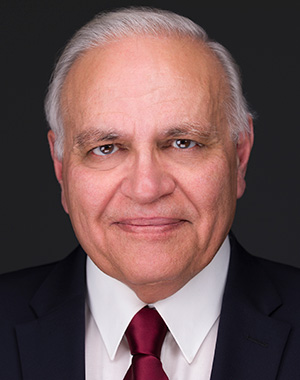 Moeness Amin, Villanova University, USA
Moeness Amin, Villanova University, USA
Title: Comeback of Sparse Arrays for Sensing and Communications, Whether Separate or Integrated
Abstract: Sensor arrays have endowed transmitters and receivers with far more capabilities in radar and communications to achieve system objects compared to a single sensor deployment. Sparse arrays are a type of sensor arrays which have been around for decades. People recognized early on that sensors can be arranged in random or non-uniform ways. Each sensor arrangement holds some benefits and shortcomings. In essence, different array structures provide different tradeoffs between desirable characteristics of the system whether it is communications or radar, or dual function. In general, sparse arrays, in lieu of conventional uniform, provide high number of spatial degrees of freedom (DoF) underlined by the flexibility of having different inter-element spacing between adjacent antennas in the transmitter the receiver, or both. These DoF, when properly utilized, lead to reduced cost and enhanced performance.
Recent advances in sparse array design build on strides made in convex optimizations and deep learning. Sparse array applications have broadened to include synthetic aperture radar (SAR), multiple-input multiple-output (MIMO) radar, Massive MIMO communications, 5G and Beyond, RF surveillance and sensing, target localization, wideband urban radar processing, space-time adaptive processing. Further, the rise of the integrated sensing and communications area as well as the emerging applications of radio frequency sensing for automotive industry and healthcare propelled many of the ongoing efforts to examine the offerings and utilities of sparse arrays in advancing technology and increasing productions.
In this talk, we discuss recent advances in sparse array design benefiting from convex optimization and deep learning. Examples are given showing the welcome impact of the sparse array configuration on channel capacity, direction finding and signal-to-interference and noise ratio.
Bio: Moeness Amin received the Ph.D. degree from the University of Colorado, Boulder, in 1984. Since 1985, he has been with the Faculty of the Department of Electrical and Computer Engineering, Villanova University, Villanova, PA, USA, where he became the Director of the Center for Advanced Communications, College of Engineering, in 2002.
Dr. Amin is a Life Fellow of the Institute of Electrical and Electronics Engineers (IEEE); Fellow of the International Society of Optical Engineering (SPIE); Fellow of the Institute of Engineering and Technology (IET); and a Fellow of the European Association for Signal Processing (EURASIP). He is the Recipient of: the 2022-IEEE Dennis Picard Gold Medal in Radar Technologies and Applications; the 2017-Fulbright Distinguished Chair in Advanced Science and Technology; the 2016-Alexander von Humboldt Research Award; the 2016-IET Achievement Medal; the 2014-IEEE Signal Processing Society Technical Achievement Award; the 2009-Technical Achievement Award from the European Association for Signal Processing; the 2015-IEEE Aerospace and Electronic Systems Society Warren D White Award for Excellence in Radar Engineering. He is also the Recipient of the 2010-Chief of Naval Research Challenge Award, the 1997-IEEE Philadelphia Section Award, and the 1997-Villanova University Outstanding Faculty Research Award. He is the Recipient of the IEEE Third Millennium Medal.
Dr. Amin served as Chair/Member of the Electrical Cluster of Franklin Institute Committee on Science and the Arts. He currently serves on the Editorial Board of the IEEE Press. Dr. Amin has over 900 journal and conference publications in signal processing theory and applications, covering the areas of Wireless Communications, Radar, Sonar, Satellite Navigation, Ultrasound, Healthcare, and RFID. He is the Editor of four books on radar.
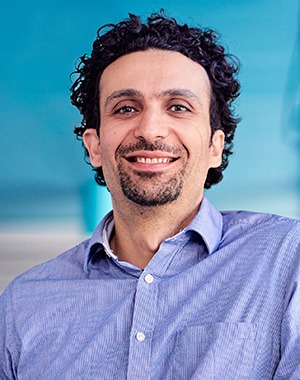 Mehdi Bennis, University of Oulu, Finland
Mehdi Bennis, University of Oulu, Finland
Title: Semantics-native Communication and Protocol Learning in the 6G Era
Abstract: This keynote talk will first provide a brief introduction of VisionX sitting at the intersection of learning, reasoning and communication in terms of key enablers and mathematical tools, while contrasting it with current efforts in this exciting research area. Subsequently, recent results in semantics-native communication and learning emergent communication protocols in various use cases will be presented. This talk will highlight the importance of transmitting semantic information as opposed to raw data that is either redundant, stale or useless to a receiver to carry out a task.
Bio: Dr. Mehdi Bennis is a full (tenured) Professor at the Centre for Wireless Communications, University of Oulu, Finland and head of the intelligent connectivity and networks/systems group (ICON). His main research interests are at the intersection of communication and ML in 5G/6G networks. He has published more than 200 research papers in international conferences, journals and book chapters. He has been the recipient of several prestigious awards including the 2015 Fred W. Ellersick Prize from the IEEE Communications Society, the 2016 Best Tutorial Prize from the IEEE Communications Society, the 2017 EURASIP Best paper Award for the Journal of Wireless Communications and Networks, the all-University of Oulu award for research, the 2019 IEEE ComSoc Radio Communications Committee Early Achievement Award and the 2020-2021 Clarviate Highly Cited Researcher by the Web of Science. Dr Bennis is a Specialty Chief Editor for Data Science for Communications in the Frontiers in Communications and Networks journal and an IEEE Fellow.



